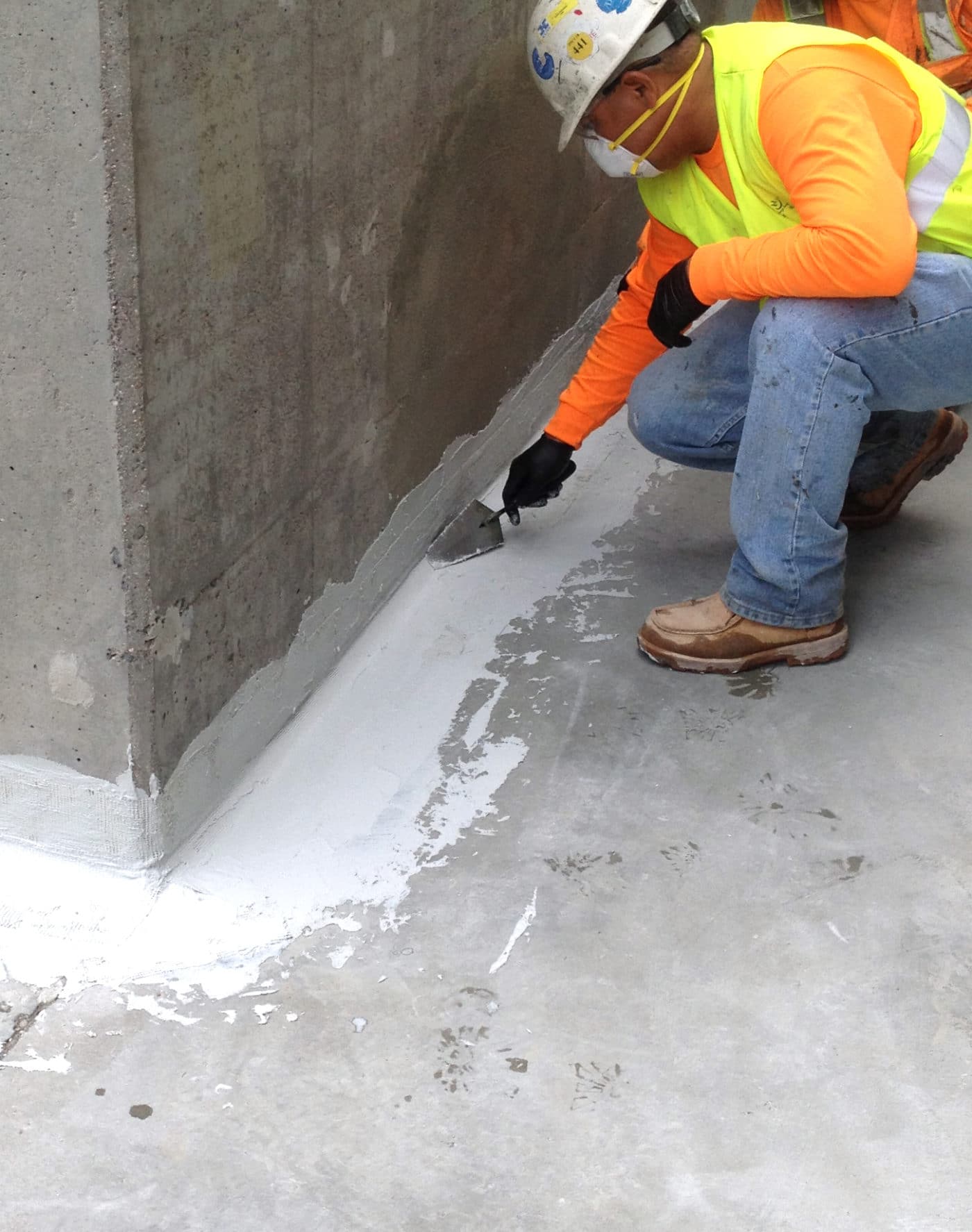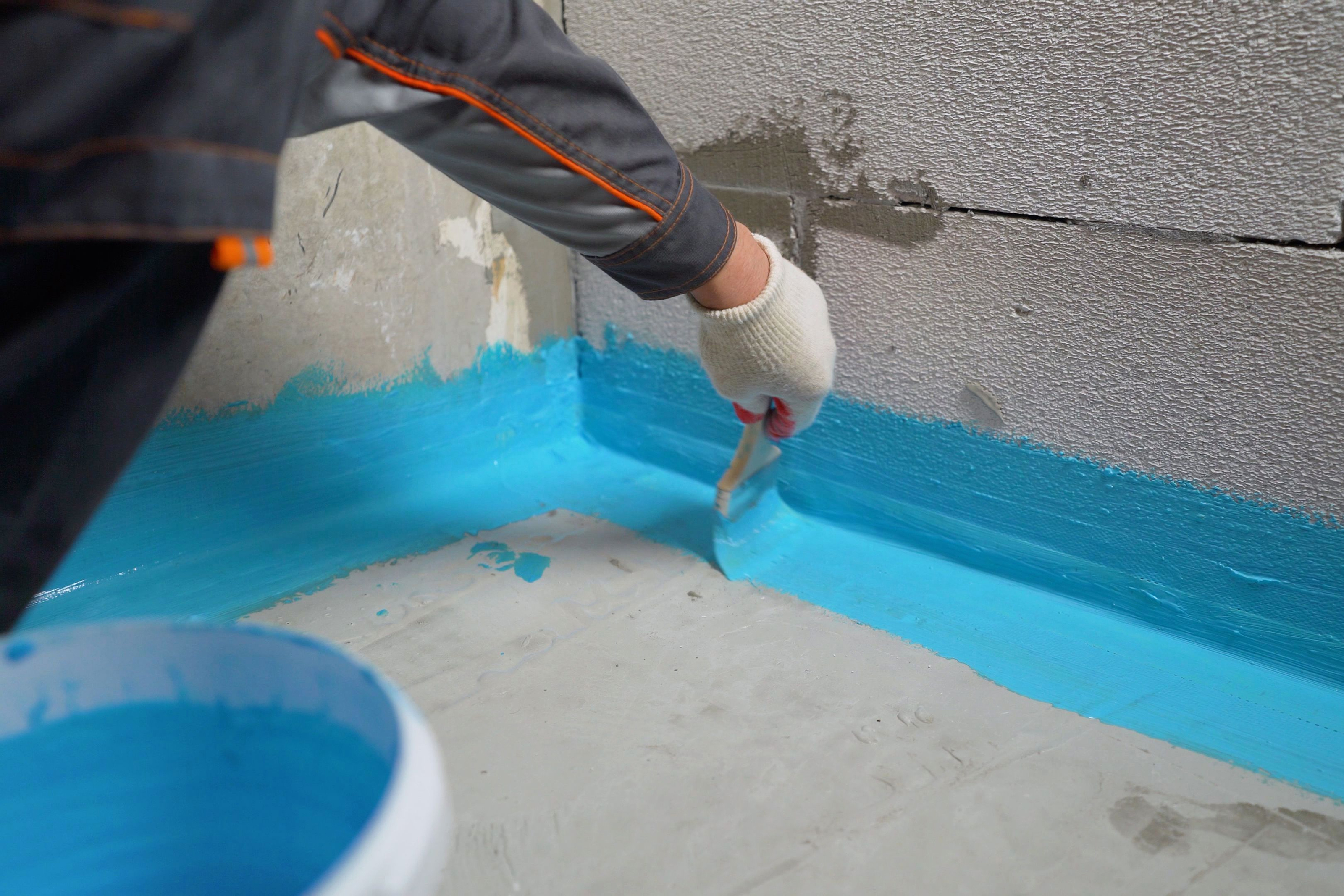Basement waterproofing Omaha: When Should You Do It?
Exactly How Waterproofing Functions: An In-depth Consider Methods and Technologies
Waterproofing is important for safeguarding frameworks from moisture-related damage. It includes various strategies and innovations that develop barriers against water invasion. Traditional methods, such as compacted clay, exist side-by-side with modern-day developments like liquid-applied membrane layers. Recognizing the nuances of these techniques is important for effective application. The performance of any kind of waterproofing option hinges not just on the techniques utilized yet also on continuous upkeep and evaluation. What are the crucial variables that influence long-lasting performance?
Understanding the Fundamentals of Waterproofing
Waterproofing is a crucial process that protects structures from water breach, which can result in significant damage in time. This technique includes the application of numerous materials and techniques developed to produce an obstacle versus wetness. The main objective is to stop water from passing through surface areas, which can create wear and tear, mold development, and structural instability.Various factors influence the choice of waterproofing method, consisting of the kind of structure, its place, and environmental conditions. Understanding the physics of water movement and the residential or commercial properties of different materials is vital in choosing an efficient waterproofing solution.Effective waterproofing not only safeguards buildings however likewise enhances their long life and integrity. Commonly, it is incorporated right into the layout stage of building and construction to guarantee thorough protection. As recognition of water-related problems expands, the importance of recognizing waterproofing basics comes to be increasingly clear to designers, builders, and homeowner alike.
Standard Waterproofing Techniques
Typical waterproofing methods have been made use of for centuries, depending on reliable techniques and products to secure frameworks from water damages. Among the oldest techniques involves making use of clay, which, when compacted, produces an all-natural obstacle against dampness. Furthermore, bitumen, a sticky, black product stemmed from petroleum, has actually been employed for its waterproof homes, typically related to roofings and foundations.Another strategy includes the application of lime-based plasters, which supply a breathable layer that allows dampness to leave while protecting against water ingress. Thatch roofing, a traditional technique still seen in some cultures, provides superb waterproofing because of its snugly packed straw layers.Moreover, the usage of rock and brick has actually been prominent, as these materials are naturally immune to water when properly installed. In general, conventional waterproofing approaches highlight the value of picking ideal products and construction practices to boost durability versus water invasion.
Modern Waterproofing Technologies
Innovations in modern waterproofing technologies have transformed the means frameworks are safeguarded from water damage. Innovative methods such as liquid-applied membrane layers and sophisticated sealants have boosted the efficiency and flexibility of waterproofing remedies. These innovations enable seamless application, reducing the threat of leakages and making certain comprehensive protection over complicated surfaces.Moreover, the integration of wise technologies, such as wetness sensors and automated tracking systems, allows real-time assessment of waterproofing efficiency. This positive method facilitates prompt maintenance and minimizes lasting repair work costs.Additionally, developments in spray-applied finishings provide fast application and exceptional attachment, adapting to different substratums while providing robust security. Methods like polymer-modified systems even more boost flexibility and longevity, making them appropriate for varied environments. Overall, modern-day waterproofing modern technologies not only reduce water intrusion yet likewise contribute to the long life and sustainability of frameworks, marking a substantial change in the industry.
Products Made Use Of in Waterproofing
The efficiency of waterproofing solutions heavily counts on the materials made use of in their application. Different materials are used to develop barriers against water access, each with one-of-a-kind residential or commercial properties suited for different environments. Typically utilized products include membranes, finishes, and sealants.Liquid-applied membranes, commonly made from polyurethane or acrylic, form a seamless barrier that adapts to complicated surfaces. Sheet membranes, typically constructed from rubber or thermoplastic, offer toughness and are ideal for bigger locations. Additionally, cementitious waterproofing products, made up of cementitious substances, supply outstanding adhesion and flexibility.Sealants made from silicone or polyurethane are crucial for joints and joints, ensuring extensive defense. Advanced materials, such as geo-composite membrane layers, combine several features, improving efficiency. Overall, the option of waterproofing materials is essential in accomplishing resilient and reliable water resistance, customized to certain project requirements and ecological problems.
Usual Applications of Waterproofing
Waterproofing plays an essential role in different industries, making certain the durability and stability of frameworks. Common applications consist of residential options that safeguard homes, industrial facilities that safeguards businesses, and commercial setups that call for durable security against moisture. Recognizing these applications highlights the importance of waterproofing in keeping both security and capability throughout various environments.
Residential Waterproofing Solutions
Many house owners face obstacles with moisture invasion, making efficient domestic waterproofing remedies important. Various techniques exist to address this issue, including exterior and interior Bonuses waterproofing systems. Interior remedies commonly entail the application of sealants and finishes to basement walls, which aid protect against water infiltration. Outside techniques usually include the installation of drain systems and waterproof membrane layers that divert water away from the foundation.Additionally, home owners may think about sump pumps to eliminate water accumulation and dehumidifiers to manage humidity degrees. Appropriate grading and using seamless gutters also play a vital duty in taking care of water flow around the home. By carrying out these methods, homeowners can substantially minimize the danger of water damages and mold and mildew development, ensuring a completely dry and risk-free living environment.

Commercial Infrastructure Security
Effective waterproofing remedies play a critical duty in the defense of business infrastructure. Landscape drainage Omaha. These strategies are necessary for safeguarding structures, vehicle parking structures, and bridges from water damages, which can endanger architectural integrity and bring about costly repairs. Common applications include the setup of membrane layers, coatings, and sealers that develop barriers against moisture seepage. Areas such as basements, roof coverings, and outside wall surfaces are commonly prioritized to ensure longevity and longevity. In addition, waterproofing systems can enhance energy efficiency by avoiding water-related problems that may result in mold and mildew growth and deterioration. By implementing durable waterproofing actions, residential property owners can shield their investments and keep operational performance, eventually contributing to the general sustainability of business centers
Industrial Applications Overview
While various markets encounter distinct difficulties, the requirement for trustworthy waterproofing remedies continues to be a continuous in industrial applications. Industries such as production, construction, and energy commonly come check out this site across atmospheres where moisture direct exposure can endanger structural stability and functional efficiency. In manufacturing centers, waterproofing is vital for securing machinery and products from water damage. In building and construction, it safeguards foundations and basements against groundwater seepage. The energy field relies upon waterproofing for the defense of tools in hydroelectric plants and offshore frameworks. Furthermore, food handling markets use waterproofing to guarantee hygiene and compliance with safety criteria. On the whole, efficient waterproofing options are vital for enhancing toughness, security, and productivity across various commercial settings.
Maintenance and Long Life of Waterproofing Solutions
Although waterproofing services are made to use long-term defense versus wetness intrusion, regular upkeep is vital to ensure their performance and longevity - Drainage & waterproofing company Omaha. Routine evaluations play a considerable function in identifying possible problems such as fractures, peeling off, or signs of water damage. Addressing these issues immediately can avoid more wear and tear and costly repairs.Additionally, cleaning the surface area of waterproofed areas aids get rid of dirt and particles that can compromise the integrity of the waterproofing barrier. It's additionally recommended to reapply protective finishes or sealers as recommended by producers to preserve optimal efficiency. Environmental variables, such as UV exposure and severe climate problems, can impact the life-span of waterproofing materials, making normal assessment important
Frequently Asked Concerns
Can Waterproofing Be Applied in Cold Climate?
The inquiry of using waterproofing in winter elevates problems regarding bond and healing. Numerous products might not execute at their ideal in low temperature levels, requiring careful selection and factor to click for info consider of details standards for reliable application.
How Long Does Waterproofing Usually Last?
The duration of waterproofing effectiveness differs based on materials and environmental factors. Typically, it can last from five to ten years, but routine maintenance and examinations are important to ensure peak efficiency and durability.
Is DIY Waterproofing Effective and Safe?
The performance and security of do it yourself waterproofing depend on numerous factors, consisting of material quality and application strategy. While some individuals attain acceptable results, others might experience problems that endanger long-lasting protection and architectural integrity.
What Are the Indications of Failing Waterproofing?
Indicators of falling short waterproofing include visible water discolorations, peeling off paint, mold growth, moldy smells, and dampness in wall surfaces or ceilings - Sump pump discharge drainage Omaha. These indicators suggest compromised barriers, demanding timely examination and prospective removal to protect against further damage
Just how Do I Pick the Right Waterproofing Contractor?
